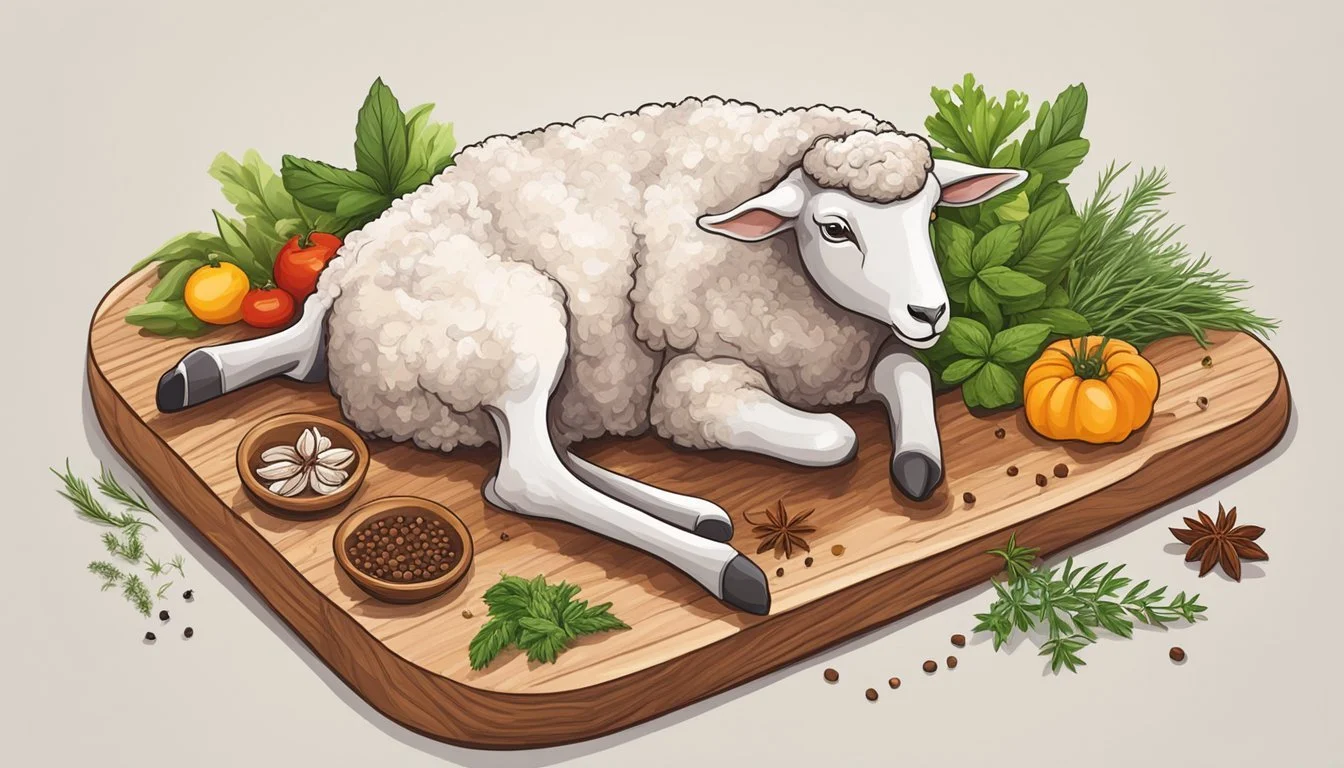How Long Does Lamb Last?
Shelf Life and Storage Tips
Understanding the shelf-life of lamb is crucial for ensuring the safety and quality of the meat. Fresh lamb, when stored properly in the refrigerator, can last between 3 to 5 days. To extend its life beyond immediate use, freezing offers a practical solution, allowing lamb to maintain its quality for up to a year. Ensuring that the temperature of the fridge stays between 35 F to 40 F is essential for optimal storage conditions.
Once cooked, lamb has a reduced shelf-life compared to its fresh counterpart. It can remain safe for consumption for 3 to 4 days when refrigerated, assuming it is stored correctly in airtight containers. If frozen, these leftovers can be safely consumed within 2 to 3 months. It's important to adhere to these timeframes to enjoy lamb that is both delicious and safe to eat.
Understanding Lamb and Its Types
Lamb refers to the meat of a young sheep that is typically less than one year old, resulting in tender cuts that are preferred for various cooking methods. There are several types of lamb cuts, each suited to different preparations.
Rack of Lamb: This includes rib bones, and the meat is known for its succulence. It is often roasted to create a visually appealing dish.
Leg of Lamb: A classic cut that is celebrated for its flavor and tenderness, suitable for roasting or grilling.
Shoulder: This is a more economical cut that is best cooked slowly, such as in a stew, to maximize its flavor and tenderness.
Loin: This cut includes the lamb chops (What wine goes well with lamb chops?), which are prized for grilling or pan-frying due to their tender meat and flavorful fat.
Variety Meats: These include organ meats such as liver and kidney, which are rich in nutrients and often cooked using fast methods.
Ground lamb, often made from shoulder or other less tender cuts, is used for patties, sausages, and as a base for numerous dishes.
Lamb steaks and lamb chops are convenient, quick-cooking options for busy weeknights.
Below is a breakdown of popular cuts:
Cut Characteristics Cooking Method Rack of Lamb Ribs, succulent meat Roasting Leg of Lamb Flavorful, tender Roasting, Grilling Shoulder Economical, flavorful Slow Cooking Loin Tasty chops, tender Grilling, Pan-frying Ground Lamb Versatile, used in various dishes Various Variety Meats Nutrient-rich, organ meats Fast Cooking
Mutton, often confused with lamb, is the meat from sheep over one year old and has a stronger flavor and tougher meat, requiring different cooking methods. Unlike mutton, lamb is celebrated for its mild, delicate flavor and its versatility in recipes across global cuisines. Each lamb cut offers distinct tastes and textures, making it imperative for cooks to select the appropriate cut for their meals.
Storing Raw Lamb
Proper storage of raw lamb is essential to maintain its freshness, prevent contamination, and extend its shelf-life. Different storage methods such as refrigeration and freezing are suitable for various durations before consumption.
Refrigerating Raw Lamb
Raw lamb should be stored in the refrigerator if it is intended to be used within 1 to 5 days. It's best kept at a temperature of around 35°F, but no higher than 40°F. For optimal storage conditions, lamb should be placed on the lowest shelf to prevent cross-contamination and maintain a stable temperature.
Freezing Raw Lamb
To freeze raw lamb, wrap it securely in airtight containers, freezer bags, or wrapped with freezer paper followed by aluminum foil. This prevents freezer burn and moisture loss, preserving the texture and flavor. Frozen raw lamb can be kept indefinitely from a safety standpoint, but for best quality, it is recommended to use it within 6 to 12 months.
Packaging for Preservation
Store raw lamb in its original supermarket packaging unless it is not airtight or if you're transferring the meat to a freezer. Wrap the meat in plastic wrap, airtight containers, or vacuum-sealed bags for longer-lasting freshness. Proper packaging helps maintain humidity and prevents contamination.
Determining Freshness
Assess the freshness of raw lamb by checking the appearance, texture, and smell. Fresh lamb is typically a soft red or pinkish color with a clean, not overly pungent, smell. The use-by date on the packaging can also guide the consumer regarding the lamb's freshness.
Safety and Contamination Prevention
To prevent contamination and growth of harmful bacteria, never leave raw lamb at room temperature for more than two hours, and store it away from cooked foods and produce. Always wash hands, utensils, and surfaces after handling raw lamb to maintain food safety.
Lamb Shelf Life at Room Temperature
Raw lamb should not be left at room temperature as bacteria can grow rapidly. The safe time frame for raw lamb at room temperature is very short, generally under two hours. Beyond that, it enters the danger zone for bacterial growth (40°F to 140°F) that can lead to foodborne illness.
Guidelines for Thawing Lamb
Thawing lamb should be done in the refrigerator or in cold water. If using cold water, submerge the lamb in water, changing it every 30 minutes to ensure consistent temperature, allowing approximately 30 minutes per pound to thaw.
Cooking and Reheating Stored Lamb
Once thawed or if it was refrigerated, raw lamb should be cooked to the appropriate internal temperature. The guidelines for roasting, braising, or cooking lamb must be followed to ensure food safety. Reheat leftover lamb to an internal temperature of 165°F.
Visual and Texture Indicators of Bad Lamb
Lamb past its prime may have a dull color, slimy texture, and an off smell. If mold or any unusual changes in color or texture are present, the lamb should not be consumed. Use the sensory indicators or the use-by date to determine if raw lamb is no longer good to eat.




